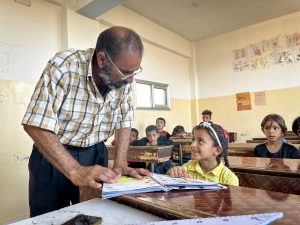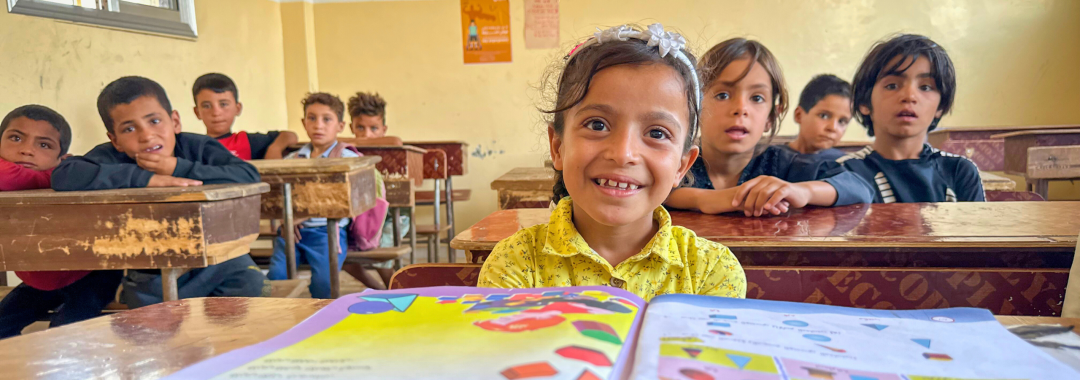After more than 14 years of a prolonged crisis in Syria, too many children aren’t in school or are at risk of dropping out. A lack of resources, displacement, and unsafe environments prevent thousands of people from accessing their right to education, and this is even more true in the country’s rural and hard-to-reach areas.
With Italy’s support, WeWorld is working in the governorates of Deir-ez-Zor, Aleppo, and Al Raqqa to ensure that every child can access a safe, inclusive, and quality education and address illiteracy.
In the Khsham district of the Deir-ez-Zor governorate, WeWorld’s initiative has rehabilitated and secured three primary schools (Al Sabaaah, Alhawigah, Sharqie), reducing architectural barriers and equipping classrooms with furniture and teaching materials. In addition, they’ve organized catch-up classes and provided transportation support for teachers, so that children can continue their studies.
To complement these efforts, over 50 teachers have strengthened their skills through training, improving quality and ensuring attendance, while parents and the community have been involved in awareness-raising activities on inclusive education, child protection, and hygiene.
Thanks to these efforts, over 4,000 people have already benefited from these interventions, including students, teachers, families, and local communities. Education begins with learning to read and write, but it goes beyond that: it means building resilience, protecting children, and guaranteeing their right to a future.
Shahd is 7 years old and lives in Marat, in the Deir ez-Zor governorate in Syria. 
She has a congenital foot dislocation, which causes her mobility problems. Despite her condition, she walks 1.5 kilometers every day to get to her school, Marrat Gharby, where she attends catch-up courses to get up to speed in all subjects.
Catch-up courses are one of the activities planned for the ongoing project in Deir ez-Zor thanks to the support of Italy. In addition, there are training courses for teachers, initiatives involving parents and teachers, and awareness campaigns for schools and the community. The school where Shahd attends catch-up courses is also part of a rehabilitation program that involves the renovation of three school buildings in Marat and the provision of school furniture and teaching materials.
When Shahd started attending classes, she was very shy, especially because of some instances of bullying by her peers related to her condition. However, she was already determined to overcome any obstacle that stood between her and her dream of becoming a doctor who provides free treatment for children with special needs. Today, her favorite subject is Arabic, as can be seen from the eloquent way she speaks.
 Her teacher, Ahmad Al-Hussein, comments on her progress: “I noticed a change in Shahd’s behavior: she opened up and a passion for school was born in her. Not only that, we also found a significant improvement in her ability to take in information, both at school and at home.”
Her teacher, Ahmad Al-Hussein, comments on her progress: “I noticed a change in Shahd’s behavior: she opened up and a passion for school was born in her. Not only that, we also found a significant improvement in her ability to take in information, both at school and at home.”
Ahmad has been teaching for 33 years and recently completed a training module on inclusive education and other teaching skills as part of the project, including active learning and life skills. “The educational process is based on three pillars: the book, the student, and the teacher. There must be a balance between these three pillars, and this is what the training emphasized, playing a significant role in motivating students and pulling them out of the boredom associated with old teaching methods.“
In Syria, especially in rural areas, access to education, particularly to safe and quality education, is hindered by a series of shortcomings: a lack of resources, adequate infrastructure, accessibility, and teachers trained for children with special needs, among others. Shahd is one of 700 students who are being supported to ensure they receive a safe and quality education, providing what is needed at all levels for their inclusion and success in the school system.

